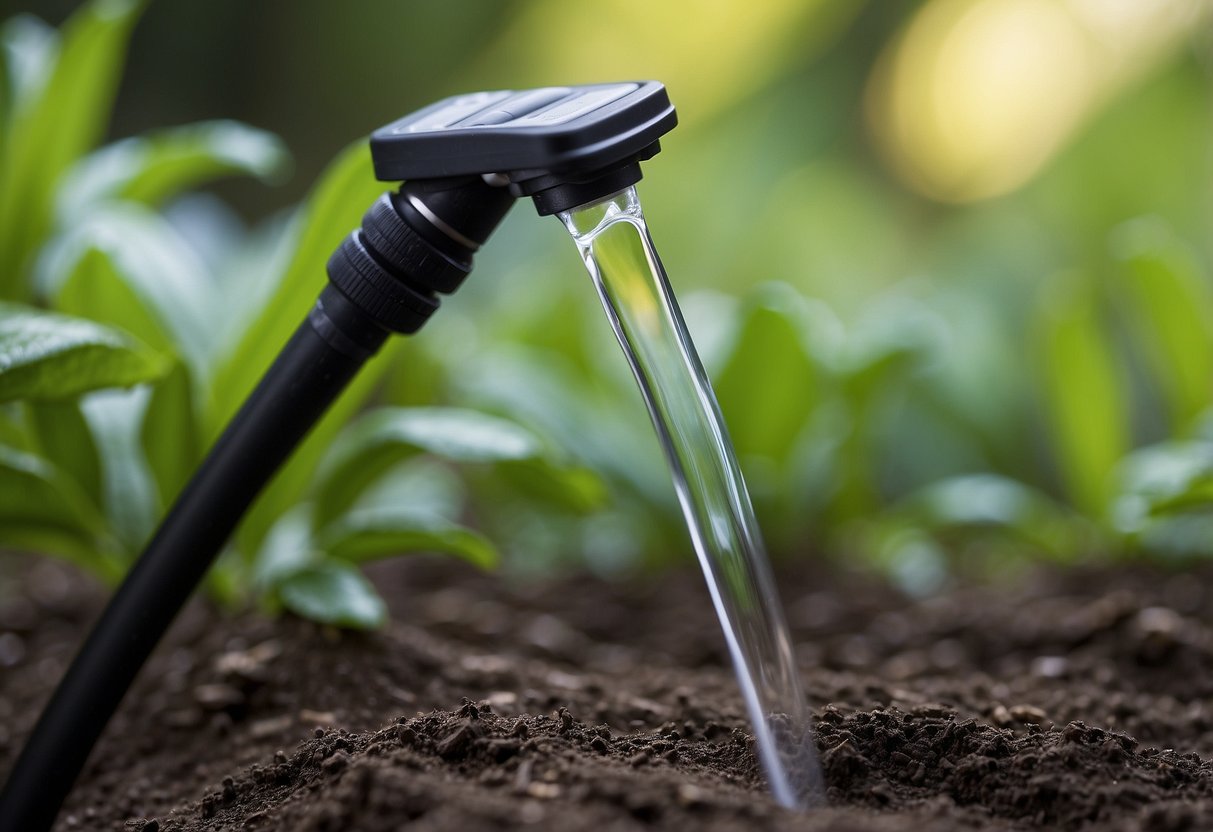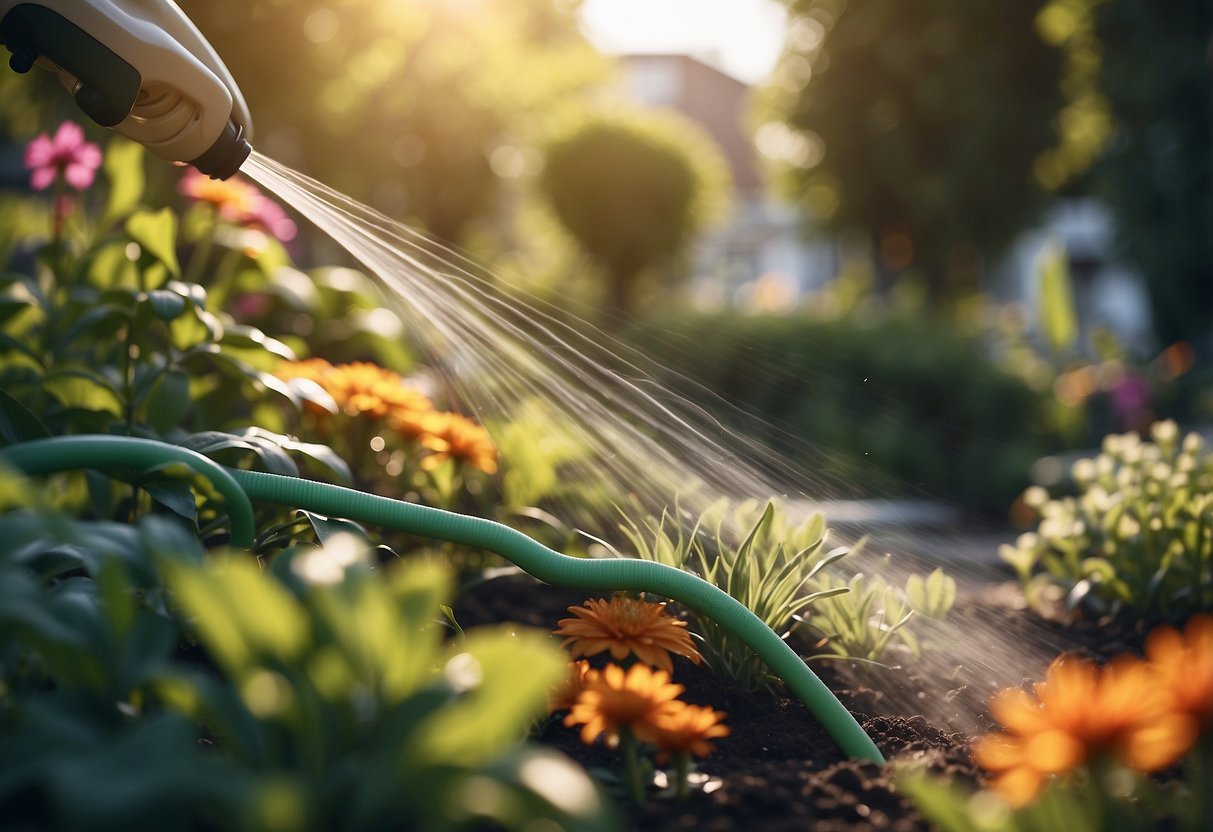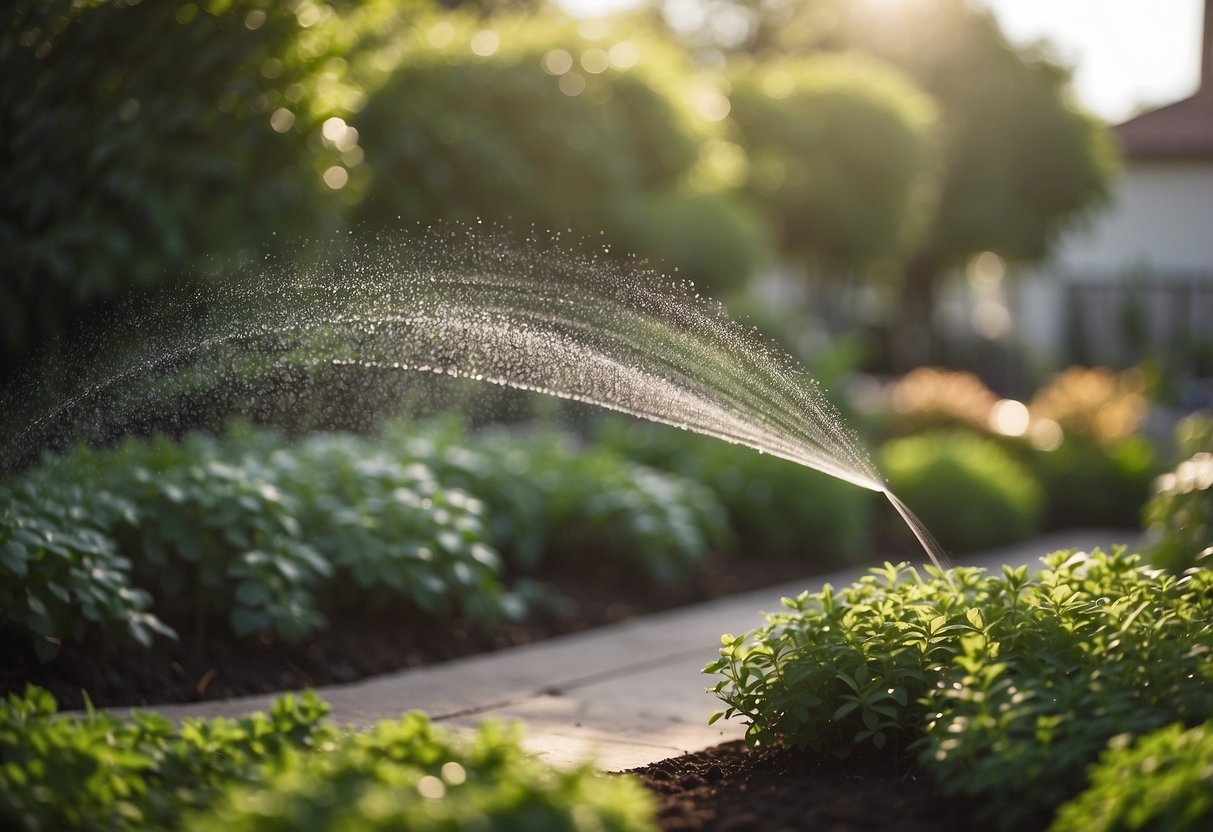Garden Watering System Ideas: Tips for a Lush, Green Garden
Gardening can be a rewarding hobby, but keeping your plants properly watered is critical to their health and growth. You might be looking for efficient and cost-effective ways to ensure your garden stays moist without a lot of effort.

There are various garden watering systems you can set up on your own that make this task easier. Whether you have a small patio garden or a large backyard, there are DIY solutions that can fit your needs and budget.
1) Drip Irrigation System

Drip irrigation systems are perfect for keeping your garden hydrated without wasting water. These systems slowly release water directly to the plant roots, which helps conserve water and reduces evaporation.
You can create your own drip irrigation system using simple materials like garden hoses and emitters. Lay the hose around your plants and punch small holes to create emitter points, which will dribble water where it’s needed most.
Consider options like the PVC Pipe Irrigation System or a Milk Jug Drip Watering System for a budget-friendly setup.
2) Soaker Hose

A soaker hose is an efficient way to water your garden. Made from porous material, it releases water slowly and directly into the soil, right at the roots. This helps minimize waste and ensures your plants get the moisture they need.
You can attach a soaker hose to your water source easily. Once connected, turn on the water at low pressure. High pressure can cause the hose to expand too much and the holes to widen.
Use stakes or garden staples to keep the hose in place. Let it run for about 30 minutes to an hour, which should be enough to moisten the soil to the desired depth. During hot weather, you may need to water more often to compensate for evaporation.
Remember to choose a soaker hose that fits your garden size and layout. Look for hoses made with durable materials for long-lasting use. For more details, visit this guide on how to use a soaker hose.
3) Oscillating Sprinkler

An oscillating sprinkler is a great choice for watering your garden. It’s especially useful for covering large, rectangular areas.
These sprinklers move back and forth, distributing water evenly over your lawn or garden beds.
For a budget-friendly option, consider the Orbit Pro Series which can cover up to 4,000 sq. ft.
If you need something for a larger lawn, the Aqua Joe model waters up to 4,973 sq. ft.
4) Smart Irrigation Controller

A smart irrigation controller offers convenience and efficiency for your garden. With these devices, you can automate watering schedules based on weather and soil conditions.
The Rachio 3 is known for its user-friendly interface and customizable zones. If you have a large yard, consider the Orbit B-Hyve 57950 for its excellent performance.
Smart controllers help you save water and ensure your plants get just the right amount. They are ideal for busy gardeners who want to maintain a healthy and lush garden.
5) Rain Barrel Watering System

Rain barrels are a great way to save water for your garden. They collect and store rainwater from your roof. This can help you cut down on your water bill and be more eco-friendly.
Setting up a rain barrel is easy. You can even make one yourself from a garbage can. Many DIY guides walk you through the steps.
Rainwater collected this way is perfect for watering plants. Use a gravity-fed system to distribute the water. Just remember, it may have lower pressure compared to other systems, but it still works well.
6) Tree Watering Bags

Tree watering bags are a great way to keep your trees hydrated without much effort. These bags slowly release water directly to the roots over several hours.
To use, wrap the bag around the base of the tree and fill it with water. They are easy to set up and help prevent overwatering.
Many bags can last for several years, saving you time and water. They are particularly useful during dry spells or for newly planted trees. For more details, check out this guide on how to use tree watering bags.
7) Automatic Water Timer

An automatic water timer can make your life much easier. It connects to your garden hose and controls the flow of water according to your set schedule.
You can find different types of water timers, like the Chapin 1-Zone Water Timer which is durable and reliable. Digital timers, such as the Melnor HydroLogic 2-Zone Digital Water Timer, offer more precise control.
8) Underground Sprinkler System

An underground sprinkler system is a great way to automate your garden watering.
You can install it yourself by following detailed guides. For example, you might find useful tips from reputable sources like Lowe’s.
This system ensures your plants get the right amount of water consistently. Plus, it’s hidden underground, keeping your garden looking neat and tidy.
9) Garden Hose with Spray Nozzle

A garden hose with a spray nozzle is one of the most handy tools for watering your garden. They are affordable and easy to use. You can find options with multiple spray patterns to suit different plants and needs.
With a spray nozzle, you can control the water pressure. This helps prevent over-watering or damaging delicate plants. Check out some great options like the Flexzilla Garden Hose Nozzle for reliable performance.
Using a garden hose with a spray nozzle makes watering efficient and enjoyable. Make sure to choose one that fits your garden’s requirements.
10) Self-Watering Planters

Self-watering planters are a great way to keep your plants hydrated. These planters have a built-in reservoir that holds water. You fill it up, and the plants get water as they need it.
You can make a self-watering planter from a plastic container. Just add a wick that draws water from the reservoir to the soil.
Another simple method is using an upside-down bottle. Fill the bottle with water, place it in the soil, and it will slowly release water. This can be perfect for those who travel frequently or forget to water their plants.
Benefits of Garden Watering Systems

Garden watering systems offer many advantages, including saving water, saving time, and promoting healthier plants. These benefits make gardening more efficient and enjoyable.
Water Conservation
Garden watering systems help you save water by targeting moisture directly to where it’s needed. Unlike traditional sprinklers that can waste water on areas without plants, systems like drip irrigation ensure water goes straight to the roots.
Using a system optimizes water use and reduces runoff, which is especially important in areas with water restrictions. Over time, this means lower water bills and a more sustainable gardening practice.
By incorporating drip irrigation or soaker hoses, you can minimize evaporation and water use. This method ensures plants get the right amount without excess, making your garden eco-friendly.
Time Efficiency
A garden watering system saves you time by automating the process. Once set up, you won’t need to spend hours dragging hoses around or manually watering each plant.
Automatic systems can be set with timers to water your garden at optimal times, such as early morning or late evening, when water is less likely to evaporate quickly. This precise scheduling helps in maintaining a consistent watering routine.
Simplifying your watering routine frees up time for other gardening activities or simply enjoying your garden. With options like PVC pipe irrigation, you can tailor the setup to fit your specific garden layout.
Healthier Plants
Proper watering is key to healthy plants. Overwatering or underwatering can stress plants, leading to poor growth or disease. Garden watering systems provide consistent moisture, encouraging strong root development.
Roots receive water slowly, reducing the risks of nutrient runoff and soil erosion. This targeted approach means plants get the right amount of water, promoting better growth, blooms, and yields, especially for vegetable gardens.
By using systems like Snip-n-Drip soaker hoses, water is delivered directly to the plant base, reducing leaf wetness and decreasing the risk of fungal diseases. This ensures your plants stay healthy and vibrant.
Choosing the Right System

Picking the right garden watering system depends on your garden’s specific needs and comparing different options. Each has its strengths and unique benefits.
Understanding Your Garden’s Needs
First, consider the size of your garden. Small gardens might only need a simple watering can or a basic hose. Larger gardens require more efficient systems.
Think about your soil type. For example, clay soil holds water longer and benefits from slow, steady watering. Drip irrigation is ideal here, providing consistent moisture without flooding.
Different plants have different needs. Vegetables and flowers often need more water than shrubs or drought-tolerant plants. You may want a system that lets you target plants individually.
Assess water availability and any restrictions in your area. In regions with limited water, systems that minimize waste are crucial. Drip systems are effective for conserving water and keeping foliage dry, which helps prevent disease.
Comparing System Types
Drip Irrigation: Ideal for targeted watering. It delivers water slowly, right at the roots, making it efficient and reducing water waste. It’s suitable for vegetables, flowers, and clay soils.
Soaker Hoses: These provide deep watering by seeping water slowly through the hose’s entire length. It’s good for garden beds and rows of plants. It also helps avoid water runoff and evaporation.
Spray Systems: These are versatile and can cover large areas. They’re automated and consist of a controller, valves, and sprinklers. Best for lawns and large landscapes.
Automated Sprayers: Widely used for various landscapes, lawns, and gardens. They consist of controllers, valves, and sprinklers. It’s convenient but might not be as water-efficient as drips or soaker hoses.
Choosing the right system involves balancing your garden’s needs and the system’s capabilities.
Installation Tips and Best Practices

Proper installation of your garden watering system can make a significant difference in the health of your plants. Focus on proper placement and adapt your system to different seasons to ensure efficiency and longevity.
Proper Placement
The placement of your irrigation system components is crucial. Make sure to avoid placing emitters directly near the base of plants, as this can lead to root rot. Instead, position them a few inches away to allow water to soak into the soil effectively.
Use stakes to support drippers and sprayers. This keeps them secure and ensures water reaches the root zone. When using a garden hose to connect the system to the water source, ensure a leak-free connection.
Consider the layout of your garden. Place emitters or sprayers evenly, and prioritize areas that need more water, like vegetable patches over flower beds. By doing so, you can avoid overwatering one spot while leaving another dry.
Seasonal Adjustments
Adjust your watering schedule according to the season. In early spring, plants require less water as they come out of dormancy. Gradually increase the watering frequency as temperatures rise in the summer.
In the fall, start reducing water levels again. This helps plants prepare for winter dormancy. Avoid watering in freezing temperatures to prevent damage to the system’s pipes and components.
Install a timer to automate these adjustments. This ensures your plants receive consistent care even when you’re not around. Also, consider a rain sensor that can pause irrigation when it detects precipitation, saving water and preventing overwatering.
Regularly check for leaks and clogs, especially after seasonal shifts, to keep your system running efficiently throughout the year.







